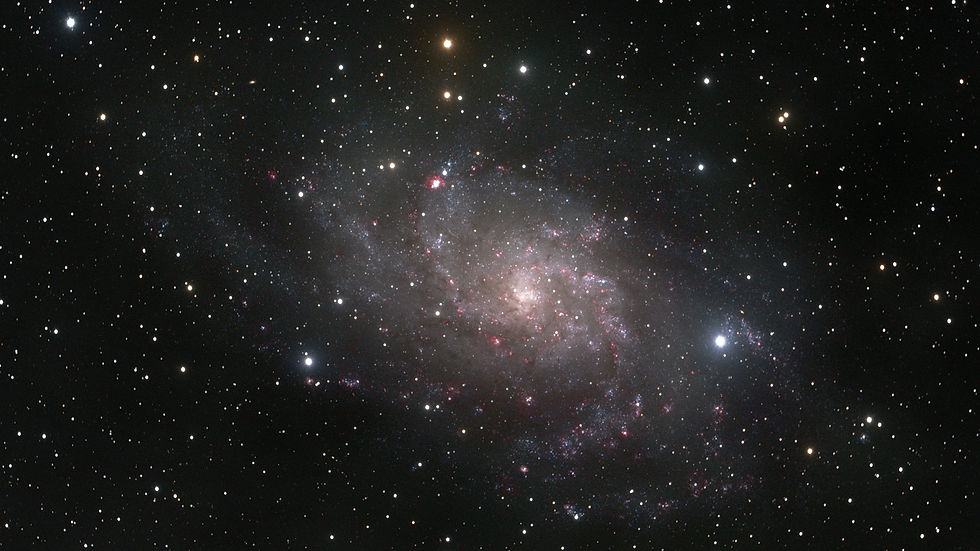
Messier’s 33’rd object is the Triangulum Galaxy, one of our local group of Galaxies. It is a separate galaxy, outside the Milky Way and just a bit farther out than Andromeda. There are a few others in our local group, including the Magellanic Clouds which are unfortunately too far south to observe in Canada. Of the local group the Triangulum Galaxy is third in size after our own Milky Way and Andromeda.
There are observers who claim to be able to see this galaxy with the “naked eye”… if so then it is the most distant object in the universe so observable. For me it is definitely not visible, so Andromeda is the most distant object I can see without visual aids. With a telescope it is very big and very bright.
M33 is in the constellation of Triangulum, a small region of our northern sky. According to Wikipedia it may have been discovered before 1654 by the Italian priest and astronomer Giovanni Battista Hodierna. It was subsequently rediscovered by Charles Messier in 1764 and catalogued again by William Herschel in 1784. In 1850 Lord Rosse noted that it had a spiral pattern, one of the first such objects identified. Rosse was probably using his “leviathan” telescope. In the 20’th century it played a role in proving the existence of galaxies because variable stars could be observed in its spiral arms (work of Professor Hubble).
The telescope was invented by folks in the Netherlands in 1608 and Galileo got his hands on one by 1609. I don’t know much about our priestly friend Hodierna, but he is known to have used microscopes and therefore almost certainly had a telescope in his hands when he discovered this galaxy some time before 1654.
This galaxy is very interesting because it has a fine spiral pattern and has a very large apparent size (like Andromeda). This makes it very easy to image (roughly one degree across, bigger than our moon) and allows us to capture many individual stars and nebulae within the galaxy. I find that the red star formation regions are more discernable in this galaxy than any other. It has around 40 billion stars and is 3 billion light years away.
I have an excellent image of this galaxy from two years ago, so nice that I made my first high quality print of it. This image shows some evolution of my astronomical work, in that the stars are sharper and the colours are much stronger. My previous (excellent) image is nearly black & white with a few tiny red regions. This one is … stellar… in my opinion.
This image was observed from the Lac Teeples observatory on a few different nights in August and September 2022. It combines RGB channels from a one-shot colour camera (3 hours or so) with narrowband Hydrogen-alpha (45 min) imaging. The blue channel was processed separately to create a Luminosity channel. RASA11, ZWO ASI6200 MC and MM Cameras.

Comments